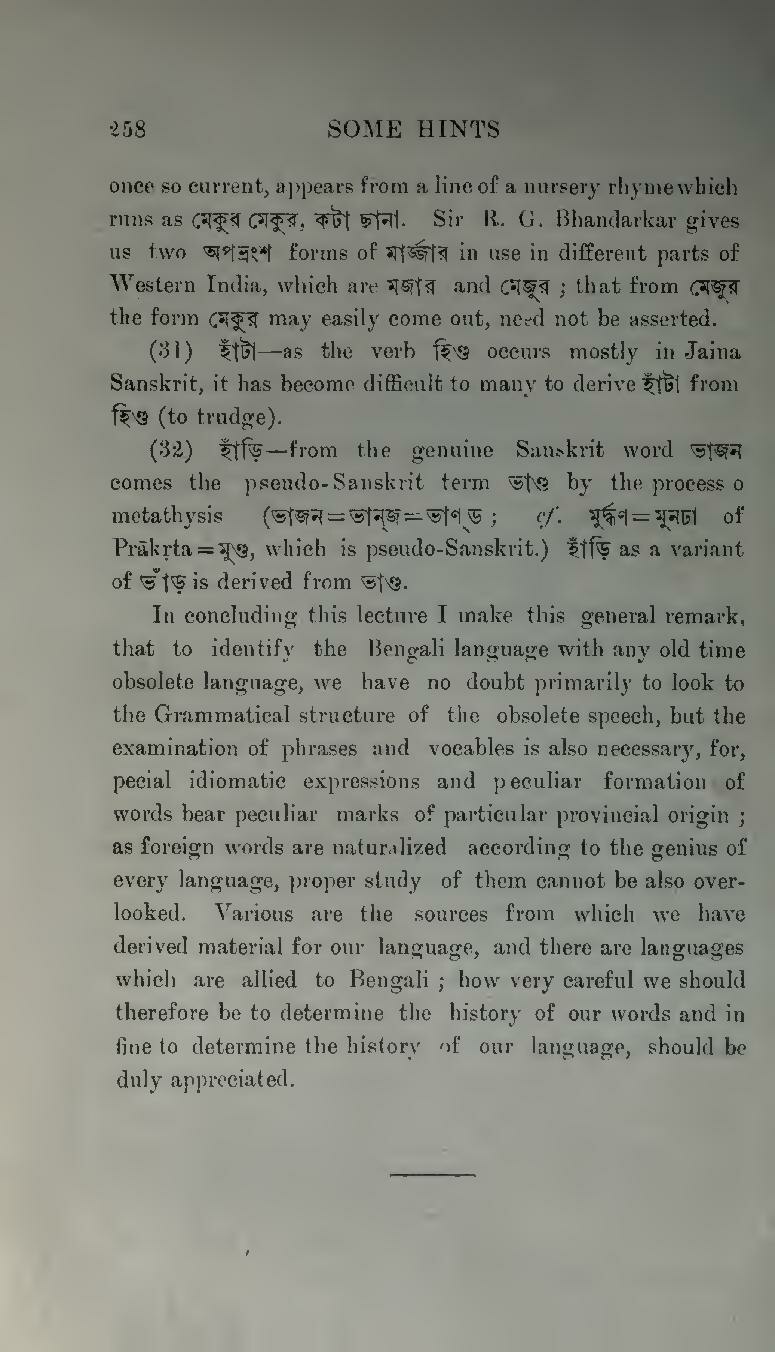once so current, appears from a line of a nursery rhyme which runs as মেকুর মেকুর, কটা ছানা. Sir R. G. Bhandarkar gives us two অপভ্রংশ forms of মার্জ্জার in use in different parts of Western India, which are মজার and মেজুর; that from মেজুর the form মেকুর may easily come out, need not be asserted.
(31) হাঁটা—as the verb হিণ্ড occurs mostly in Jaina Sanskrit, it has become difficult to many to derive হাঁটা from হিণ্ড (to trudge).
(32) হাঁড়ি—from the genuine Sanskrit word ভাজন comes the pseudo-Sanskrit term ভাণ্ড by the process of metathysis (ভাজন = ভান্জ = ভাণ্ড; cf. মুর্দ্ধণ = মুনঢা of Prākṛta = মুণ্ড, which is pseudo-Sanskrit.) হাঁড়ি as a variant of ভাঁড় is derived from ভাণ্ড.
In concluding this lecture I make this general remark, that to identify the Bengali language with any old time obsolete language, we have no doubt primarily to look to the Grammatical structure of the obsolete speech, but the examination of phrases and vocables is also necessary, for, special idiomatic expressions and peculiar formation of words bear peculiar marks of particular provincial origin; as foreign words are naturalized according to the genius of every language, proper study of them cannot be also overlooked. Various are the sources from which we have derived material for our language, and there are languages which are allied to Bengali; how very careful we should therefore be to determine the history of our words and in fine to determine the history of our language, should be duly appreciated.
